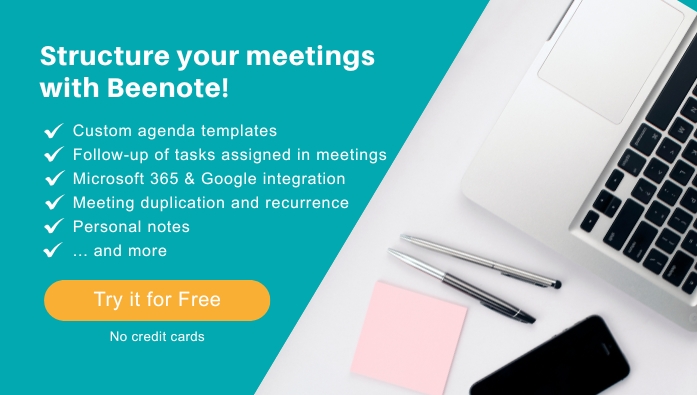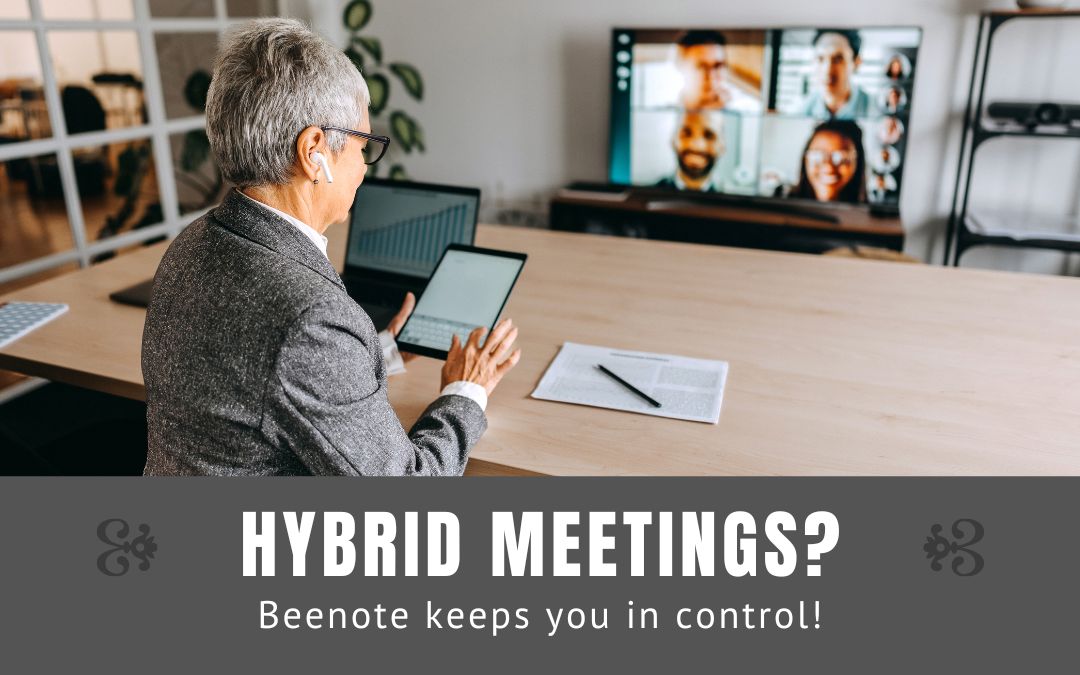Hybrid meetings bring together people both in person and remotely, connecting them through digital tools. With the rise of remote work and the introduction of new work models, this format has essentially become the norm in many organizations. However, it doesn’t come without challenges. This type of meeting still raises major issues such as disorganized interactions, difficulty maintaining attention, technical stability, effective coordination between teams…
Good news: there are practical ways to make these meetings smoother, more inclusive, and more productive. That’s where Beenote comes in. So, how can it actually help you? We’ll show you how to make every hybrid meeting more structured, efficient, and fair.

Table of Contents
Why Are Hybrid Meetings a Challenge?
While working in hybrid mode offers welcome flexibility, organizing them effectively is no easy task. This mixed format creates structural imbalances between in-room participants and those joining remotely, leading to several recurring challenges.
- Technical Issues: Unstable connections, crackling microphones, poorly positioned cameras… Technology, which is supposed to bring us closer, can sometimes become a source of frustration, making communication less smooth.
- Lack of Engagement from Remote Participants: When people joining virtually feel sidelined or ignored, their level of involvement drops. As a result, some completely disengage, which affects the overall productivity of the meeting.
- Complicated Coordination: Speaking turns are often poorly managed, with unexpected interruptions or awkward silences. Without clear facilitation, the meeting dynamics can quickly become chaotic.
- Unclear Follow-Up: With overlapping discussions and poorly distributed meeting notes, decisions are often forgotten, and assigned tasks may go untracked.
- Lack of Nonverbal Communication: In remote settings, much of the body language, micro-expressions, and real-time cues are lost. This creates an emotional distance and makes some interactions feel less natural.
According to a study by Owl Labs, 45% of hybrid employees feel less involved in the decisions made during meetings.
7 Best Practices for Successful Hybrid Meetings
Preparing a Shared Agenda in Advance Is Crucial
When the agenda arrives at the last minute, everyone may come with their notes, but discussions quickly become scattered, and a lot of time is wasted. It’s therefore better to publish the schedule of topics at least twenty-four hours in advance so that everyone can focus and come prepared.
With Beenote, you can create the agenda collaboratively, choose from predefined templates, or customize it to your needs. You can specify the responsible persons, objectives, and the duration of each item. Once the meeting is approved and confirmed, the designated leader or partner can send official invitations by email to all participants, who can then review the agenda in advance, ensuring that everyone arrives prepared and focused.
Use a Real-Time Collaborative Tool
When working remotely without a shared tool, those not in the room quickly lose track of the discussion and risk disengaging. To prevent this, a platform is needed that allows everyone to react or add content in real time. Beenote provides an interactive interface where all participants can contribute to the agenda in draft mode until it’s finalized, and collaborate on topics together.
Establish Rules for Speaking Turns
Without a clear framework, speaking tends to be uneven: some people talk too long while others remain silent. It’s therefore better to designate a facilitator, establish specific roles, and organize speaking turns. With Beenote, you can assign roles such as leader, partner, participant, or even guest right from the agenda creation stage.
Engage Remote Participants
People joining from home may feel left out if they aren’t addressed directly. To keep them engaged, rely on voting, personal notes, or quick reactions. Beenote brings all of this together on a single platform, ensuring that every participant, even online, can easily contribute their voice.
Centralize Note-Taking and Decisions
When notes are scattered everywhere without a single reference, decisions get fragmented, and follow-up becomes unclear. Centralization is therefore essential. Beenote allows you to take notes on each agenda item during the meeting, and it automatically generates a clear minutes that can be edited, viewed, shared, downloaded as a PDF, or sent by email.
Automate Post-Meeting Follow-Ups
Decisions too often remain unimplemented due to a lack of clear follow-up. It is therefore essential to assign responsibilities clearly and schedule reminders. Beenote allows you to create tasks directly from the agenda, assign them to each participant, and track their progress through integrations and automated reminders.
Test Technology Before the Meeting
Technical issues—microphone, camera, or connection problems—can significantly affect the meeting experience. A quick test a few minutes before the start can be very helpful. Moreover, Beenote integrates seamlessly with video conferencing platforms such as Teams, Google Calendar, and Outlook, helping to minimize issues right from the start of the meeting.












0 Comments